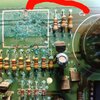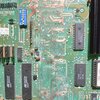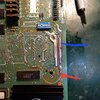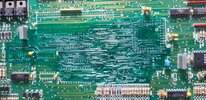I'm working on repairing an old PCB where a CMOS battery has leaked. After repairs and cleaning up I'm measuring 71Kohms between the 53v and 12v rails (no continuity)
I do alot of battery damage repairs but because wanted to check people's thoughts on the leakage because it's between the power rails which is new.
Should I be concerned? Using ohms law it works out in the mA range (53v has a 10amp fuse?) It could be through components?
Any advice welcome
Thanks
I do alot of battery damage repairs but because wanted to check people's thoughts on the leakage because it's between the power rails which is new.
Should I be concerned? Using ohms law it works out in the mA range (53v has a 10amp fuse?) It could be through components?
Any advice welcome
Thanks





